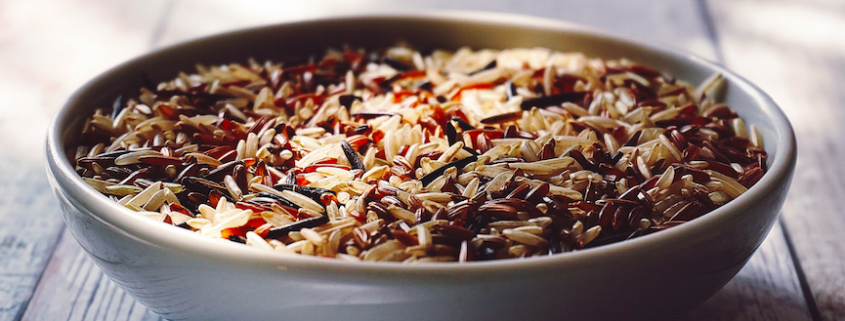4 Reasons to Choose More Whole Grains
 Did you know that increasing your whole grain intake can be beneficial to your overall health? Swapping out refined carbohydrates for whole grain products is rarely a bad idea! Increase your consumption throughout the month of September for National Whole Grain Month.
Did you know that increasing your whole grain intake can be beneficial to your overall health? Swapping out refined carbohydrates for whole grain products is rarely a bad idea! Increase your consumption throughout the month of September for National Whole Grain Month.
There are so many health benefits associated with whole grain products, that not only have to do with the added fiber content but also the nutrient composition. Refined flours are usually missing the bran and germ part of the grain, leaving only the endosperm. The bran and germ are full of vitamins and minerals that are nutritious and useful to the body.
Whole grains can be found in numerous products, not just in whole wheat bread. Read the ingredient list on products to make sure that the first ingredient listed is whole grain.
4 Reasons to Eat More Whole Grains
When flour is being made, the bran and germ are often removed to extend the shelf-life of the flour. However, when these parts are removed, the nutrients and health benefits that come with them are also removed.
Whole grains have all three parts of the grain, endosperm, bran, and germ, therefore they contain all the nutritious benefits.
- Fiber: Whole grains have a higher fiber content than refined carbohydrates. Fiber helps keep you full, regular, and can lower your risk for developing some chronic diseases.
- B-Vitamins: Thiamine, folate, and niacin are found in whole grains. These B-vitamins are essential for brain function, energy levels, and overall metabolism.
- Antioxidants: Many compounds, like phytic acid, are found in whole grains. These compounds act as antioxidants that help your body to fight inflammation.
- Iron: Whole grains contain more iron than refined grains. Iron is an essential mineral that is needed for the transport of oxygen throughout the body.
10 Places to Get Whole Grains
As the benefits of whole grains become more widely known, the availability of whole grain products increases. Many carbohydrates you buy in the supermarket come in an alternative whole grain version, like pastas. Here are 10 whole grains to look for in your food’s ingredient list:
- Oatmeal
- Millet
- Quinoa
- Barley
- Buckwheat
- Brown rice
- Teff
- Bulgur
- Maize
- Wild Rice
You can buy many of these grains in the form of flour or incorporated into products, such as breads or muffins. Look for the whole grain stamp on products to distinguish what foods are made with 100% whole grain.
Your Turn to Action: What whole grain foods are you going to try this week? Let me know in the comments below.


Leave a Reply
Want to join the discussion?Feel free to contribute!